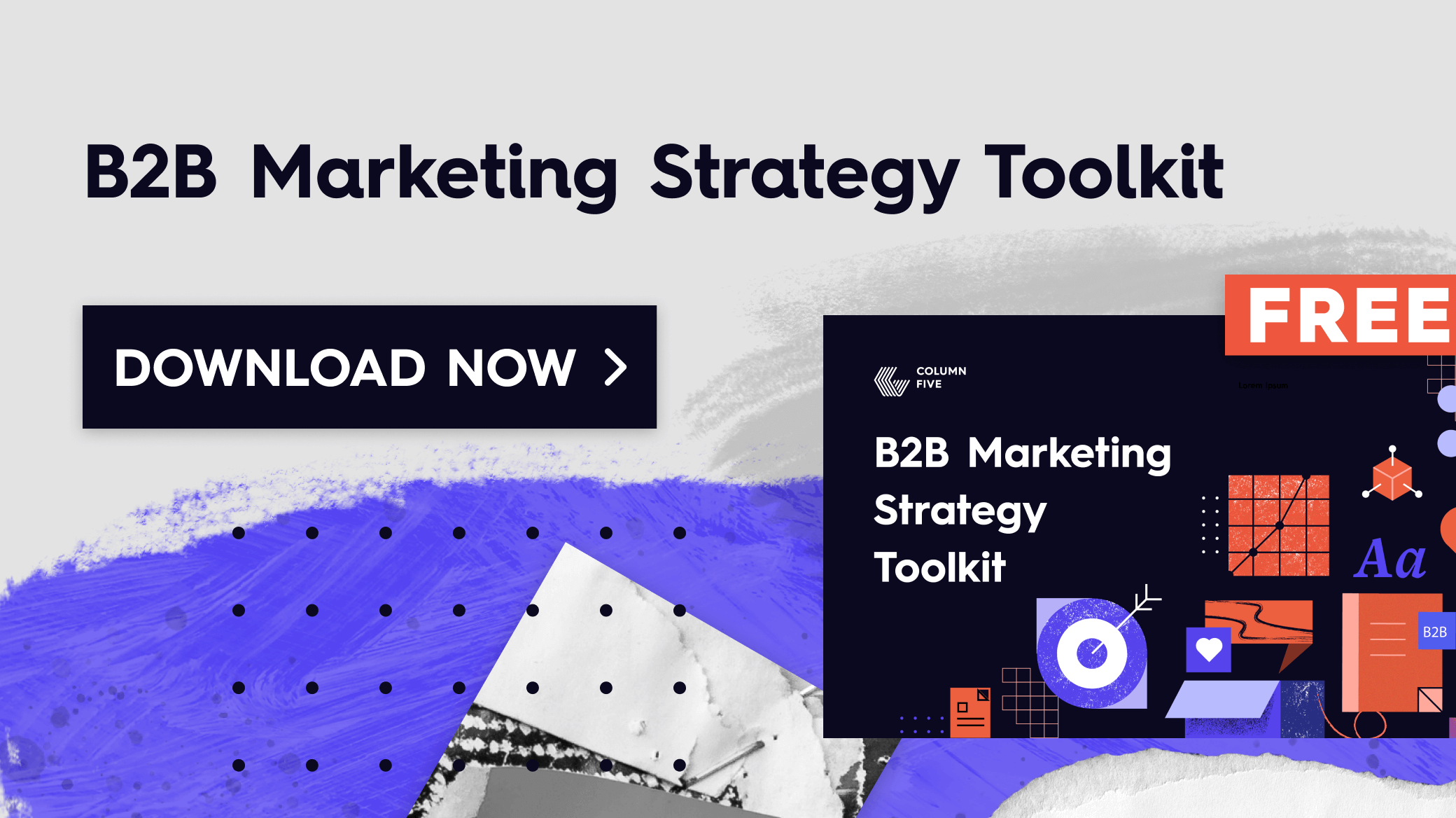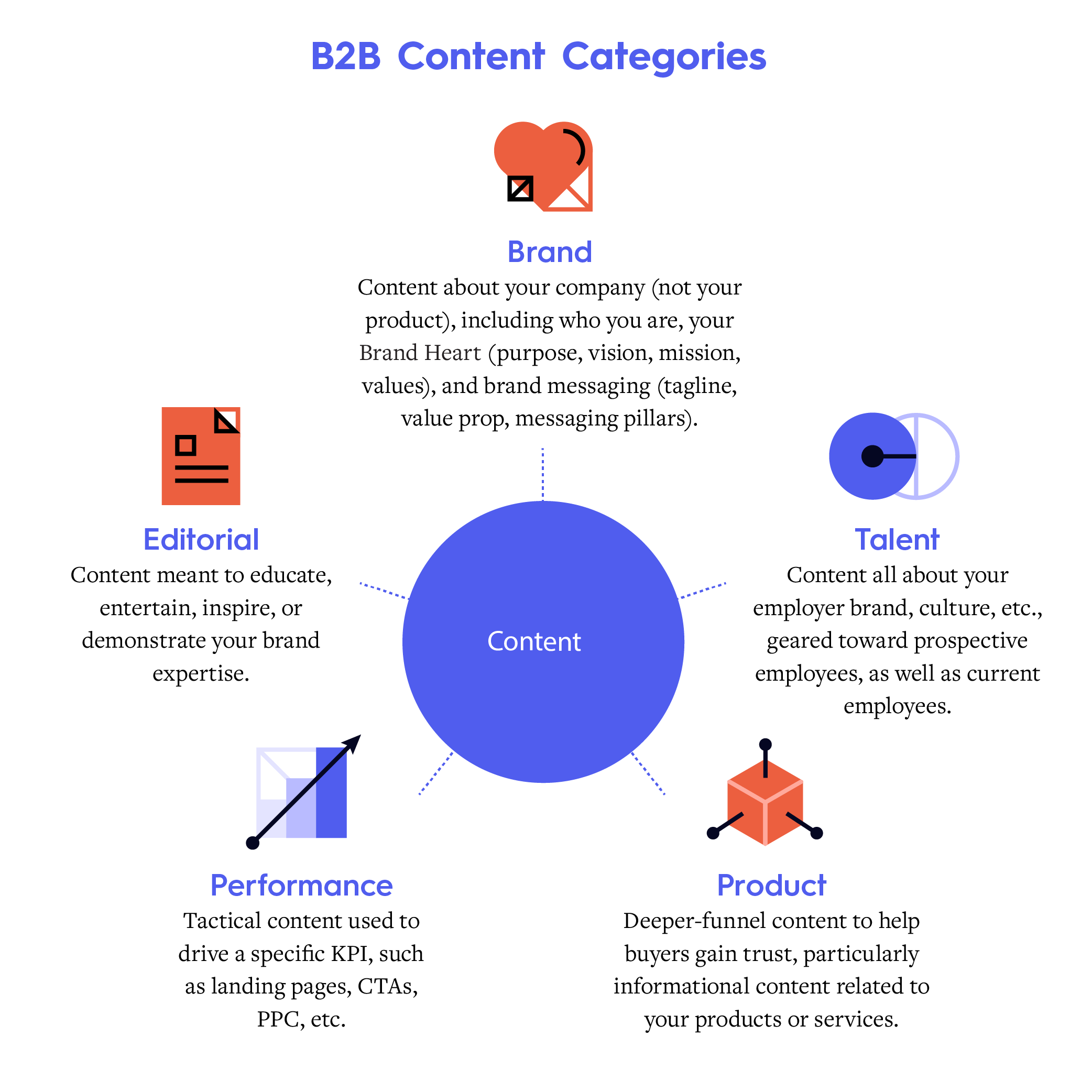If you’re a growth-stage SaaS company, you know it’s the wild west out here. It’s a smaller customer pool, with more competition, and a ton of roadblocks along the path to purchase. How do you succeed? By working intelligently, focusing on measurable progress, and taking expert advice. (Hi, we’re the experts.) Having helped hundreds of brands over the last decade, we’ve seen the most common problems and pitfalls that SaaS marketers struggle with—and we know how to navigate them.
So today, we’re sharing our best down-and-dirty tips to help you get your marketing in shape, along with helpful resources, templates, and toolkits to make it a whole lot easier.

20 Tips to Improve Your SaaS Marketing
Whether you’re starting fresh or correcting course, we hope you find these tips helpful. (And if you have any of your own to share, please do!)
1) Create goals you can ACTUALLY measure.
According to the Content Marketing Institute, only 40% of B2B marketers have a documented content strategy. We know that SaaS marketers (whose bosses are more focused on the product than brand) are often flying without a strategy. But without a plan, you’re only going to waste everyone’s time and resources. To figure out if what you’re doing is actually working, use our guide to set measurable goals, track your progress, and adjust as needed, and download our B2B marketing strategy toolkit to craft a strategy that will help you reach your goals.
2) Creep on your competition’s content.
If you want to outshine your competitors, you need to know how they’re crushing it—and how they’re dropping the ball. Conduct a simple competitor content audit to dive deep into their content and spot opportunities to outshine them with your own brand storytelling.
3) Find the messaging gaps in your own content. (Trust us, they’re there.)
To create a seamless buyer experience, you need to say the right things at the right time. But how do you know what people need to hear? See our guide to map your customer journey, identify key messaging for each stage, and tailor your content accordingly.
4) Collaborate with sales to create a seamless brand experience.
If sales and marketing aren’t aligned, you can’t deliver the experience your customer needs and wants. (Fun fact: Only 60% of B2B marketers say they provide a consistent experience across their buyer journey.) To get on the same page, find out how to bridge marketing and sales in your buyer journey and create sales content that empowers your team to close the deal.
5) Focus on brand, not product.
In SaaS marketing, everyone is worried about product development, but it’s your brand that will ultimately help you stand out from your competition. Use our brand strategy toolkit to build your brand and tell your brand story in every piece of content.
6) Identify your brand values—and share them.
B2B consumers are emotional people, and they want to feel connected to the brands they buy from. Use our free workbook to identify your brand heart (aka purpose, vision, mission, and values), then create content to share these beliefs with your audience.

7) Nail your basics: Search, Email, Social.
When you’re creating a fresh marketing strategy, focus on Search, Email, and Social first. These are the core channels that will help you reach the right people, build strong relationships, and move people along the path to purchase over time. If you’re not sure who you’re trying to reach (or where they are), see our guides to find your target audience and create a distribution plan that helps them find your content.
8) Focus on the social channels that matter.
You don’t have to be everywhere or try to keep up with everyone. Only focus on where your audience is—and where you’re getting the most return. If you’re not sure what that is, see our guide choose the right social channels for your brand.
9) Tell your brand story at every touchpoint.
Your brand story is your biggest differentiator, so infuse it into every part of your marketing. From blog content, to social posts, to CTAs, tell the story of who you are, what you care about, and why your audience should care. For inspiration, use these 10 tips to tell a compelling brand story.
10) Maximize every piece of content.
According to the Content Marketing Institute, 60% of B2B marketers have been asked to do more with the same resources. Luckily, you can get more mileage from your content if you remix, repurpose, and reuse. Turn that infographic into an Instagram story. Create a series of articles from that ebook. There are a million ways to get creative. For more tips to do that, find out how to put a divisible content strategy to use.
11) Create brand content that is actually on brand.
A consistent visual identity is a key part of your brand story, so make sure every piece of content you create accurately reflects who you are. You should have a complete brand identity, as well as brand guidelines, but it is especially helpful to create a simple checklist to vet every piece before it goes out the door.
12) Give buyers the info they need, then sit back.
B2B buying is changing. Buyers want less handholding, more information, and the option to complete their purchase online. Your job is to give them the information they need, in its most optimized presentation, to help them make their own choices. Find out more about how B2B buying is changing and how you can adapt.
13) Remember that B2B buyers are PEOPLE.
Although there are usually more stakeholders in a B2B buying decision, they aren’t all faceless corporate drones. Your buyers are people with feelings, so think about what makes them tick. Look for ways to speak to their needs, problems, and wants with an empathetic approach. See our tips to tap into empathy and turn it into great content.
14) Know the 5 types of B2B content—and use them all.
Every content strategy should include a mix of:
- Brand content (about your brand specifically—who you are, what you do, etc.)
- Editorial content (thought leadership, expertise, etc.)
- Talent content (for potential employees and current employees)
- Product content (sales/informational content)
- Performance content (tactical content in support of KPIs)
Make sure you have all types of content represented in your editorial calendar, and find out more about how each content type serves your brand goals.

15) Curate the perfect mix of content for your unique audience.
A good content mix is like a beautiful meal; it feeds you a little bit of everything you need to feel nourished and satisfied. In B2B, there are all sorts of ways to do this, from dense thought leadership to fun polls. To find out what you should be feeding your audience, see our guide to create the perfect mix of content.
16) Use different formats to tell your brand story effectively.
What types of content is your audience used to seeing? What do they like to engage with? What formats can deliver your message most effectively? These are important questions that should be considered during the brainstorming phase—not just when you’re handing a content brief off to your designer.
17) Only choose the metrics that matter.
You can only manage what you measure, but if what you’re measuring isn’t really that insightful, it won’t help you make meaningful improvements to your content strategy. (This is a big problem with vanity metrics that look great but mean very little.) To make sure you’re only focusing on numbers that will move the needle, see our guide to choose the right metrics for your content strategy.
18) Calculate ROI the right way.
ROI is one of the most frustrating parts of SaaS marketing, especially if you don’t know exactly how to calculate it. Get the clarity you need with our guide to determine ROI the easy way.
19) Don’t make content for you. Make it for your audience.
If you want people to connect with your content, you need to provide value in some way. Whether it inspires, educates, or entertains, ask these questions to vet your ideas and ensure they are meaningful and relevant to your audience.
20) Choose the right agency with the right expertise.
An agency can be a great support to guide your brand strategy or bring your content strategy to life. But one of the biggest challenges that tech marketers face is not being able to find a partner who can speak to their audience. See our guide to find a B2B agency with the right expertise to help you achieve your goals. And if you want to start your search with us, find out what it’s like to work with us on a content strategy—or reach out. We’d be happy to help you apply these tips (and a whole lot more) to get the marketing results you want.





